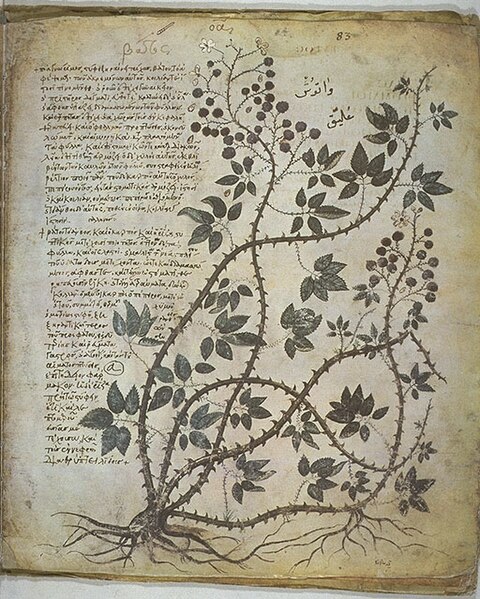De materia medica is a pharmacopoeia of medicinal plants and the medicines that can be obtained from them. The five-volume work was written between 50 and 70 CE by Pedanius Dioscorides, a Greek physician in the Roman army. It was widely read for more than 1,500 years until supplanted by revised herbals in the Renaissance, making it one of the longest-lasting of all natural history and pharmacology books.
Cover of an early printed version, Lyon, 1554
Dioscorides receives a mandrake root. Vienna Dioscurides manuscript, early 6th century.
Blackberry. Vienna Dioscurides, early 6th century
Mandrake (written 'ΜΑΝΔΡΑΓΟΡΑ' in Greek capitals). Naples Dioscurides, 7th century.
Materia medica is a Latin term from the history of pharmacy for the body of collected knowledge about the therapeutic properties of any substance used for healing. The term derives from the title of a work by the Ancient Greek physician Pedanius Dioscorides in the 1st century AD, De materia medica, 'On medical material'.
Page from the 6th-century Vienna Dioscurides, an illuminated version of the 1st-century De Materia Medica
Dioscorides, De materia medica, Byzantium, 15th century.
Dioscorides De materia medica in Arabic, Spain, 12th-13th century
One of the four covers (Arnoullet) of the "Lyons printers' tribute edition to Michel de Villeneuve" edition of the Materia Medica. By Michel de Villeneuve & Pietro Andrea Mattioli, printed by Balthazar Arnoullet in 1554, in Lyons.






